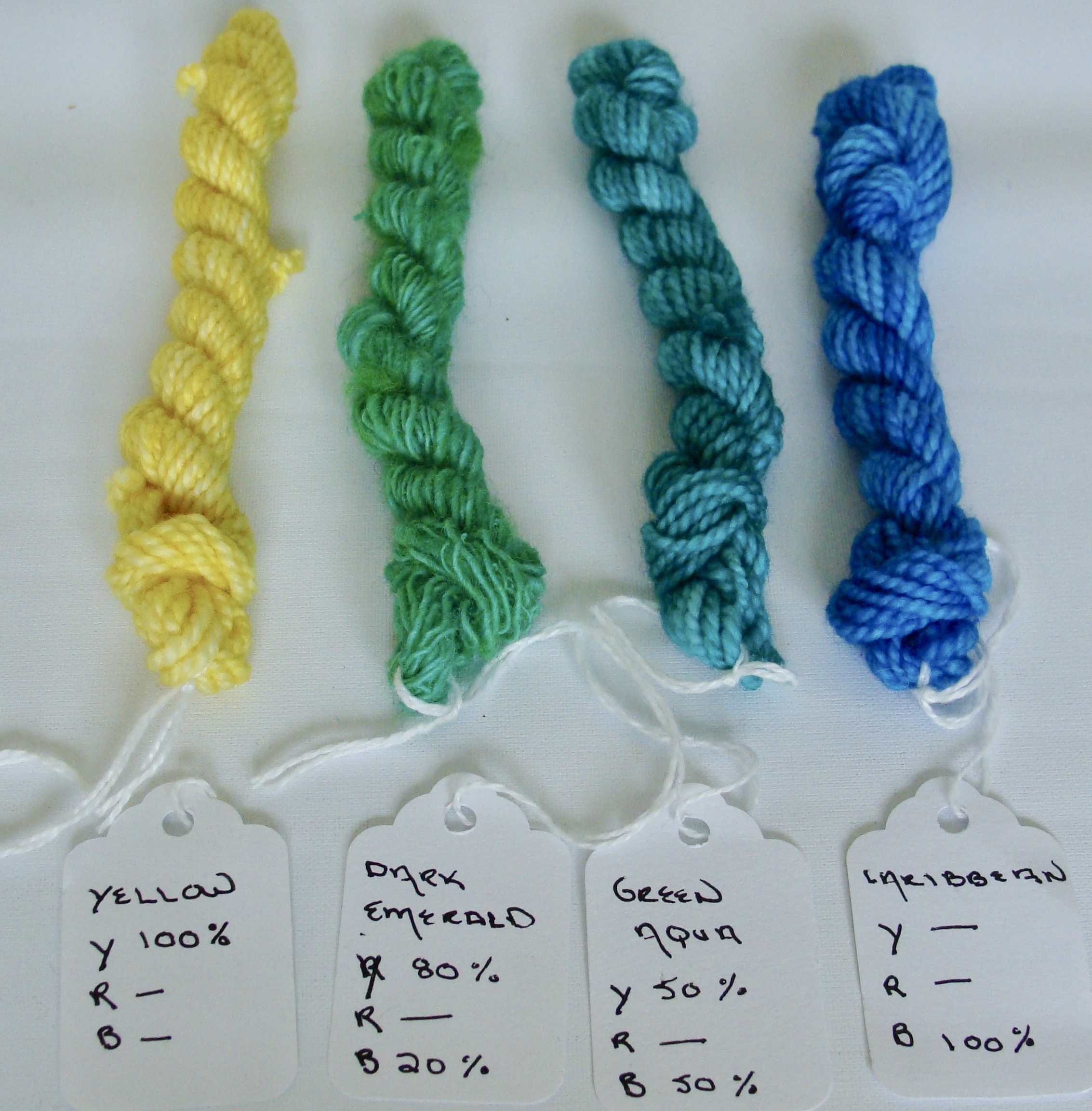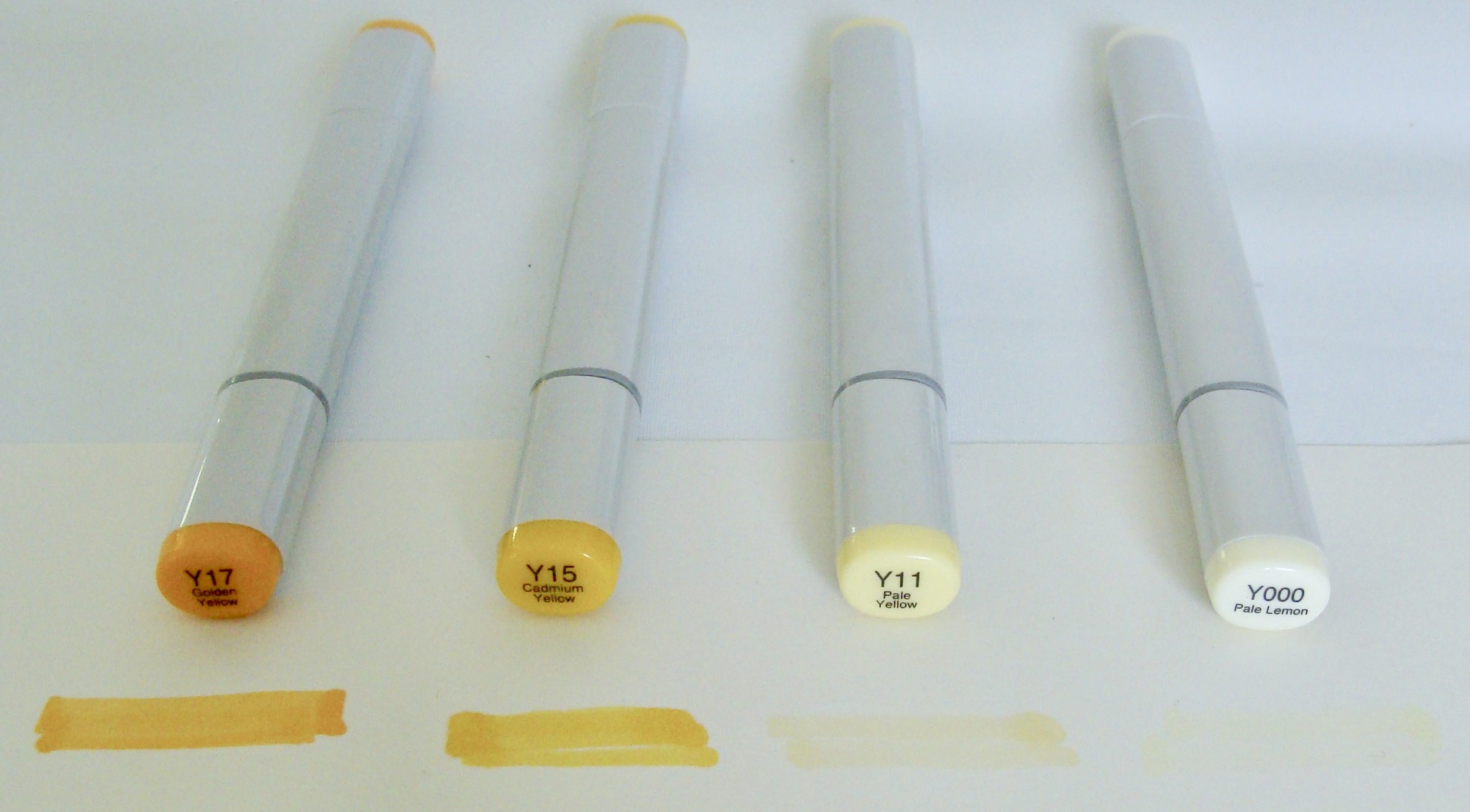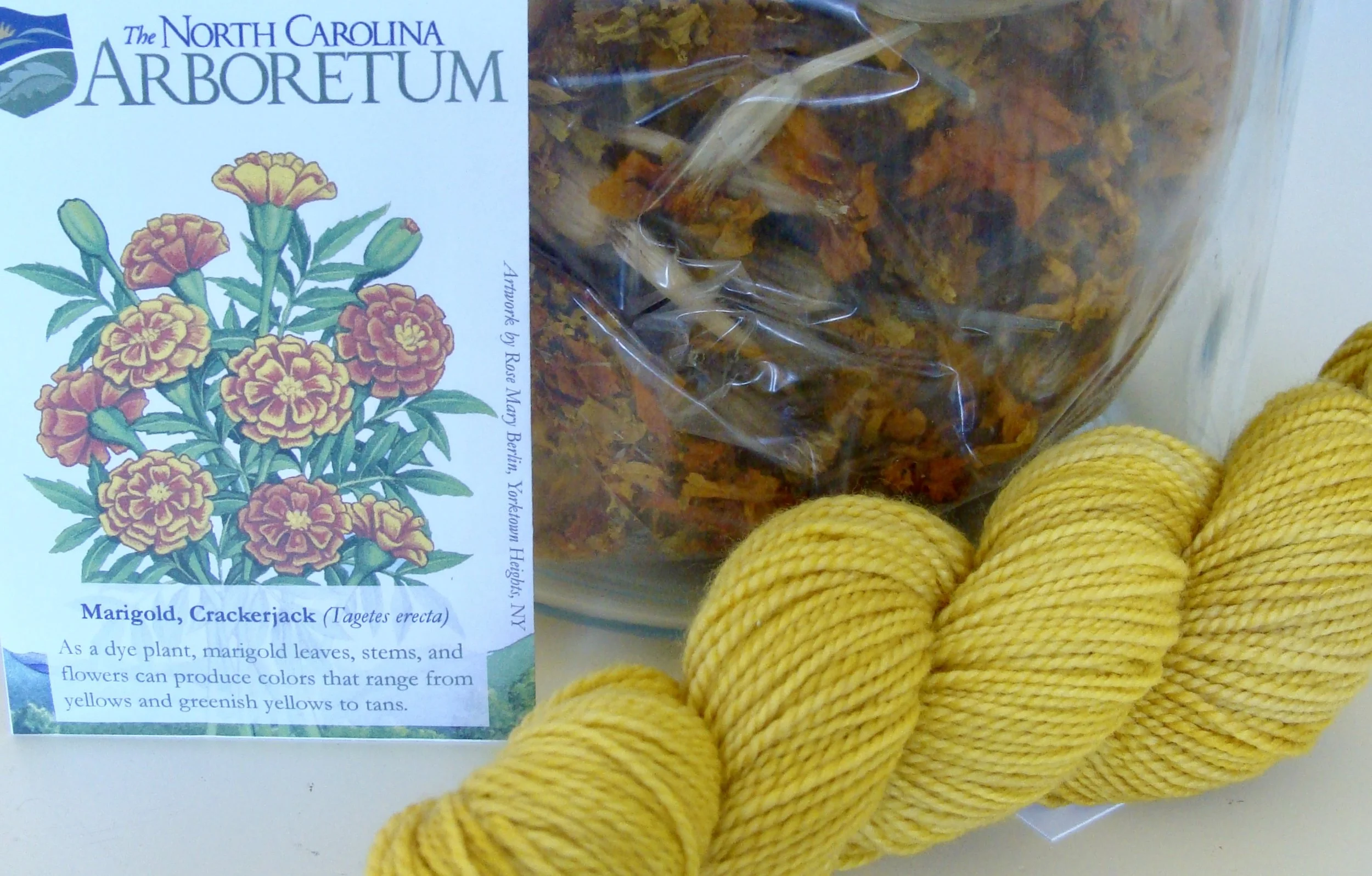Dyeing a Pyramid
Not one of these pyramids . . .
. . . . but a color pyramid.
You likely are familiar with a color wheel which presents the colors (hues) and their relationships in an evenly spaced circular format. The wheel builds off of the primary colors of yellow, red, and blue from which all other colors are made. Thus, secondary colors are created from mixing two primaries; blue and yellow make green, blue and red make purple (or violet), and yellow and red make orange. Mixing these colors in various combinations gives us the wide variety of colors we love whether in our crafting, fashion, or home decor.
Using just the three primaries, I was able to create 28 different colors by varying the percentage of yellow, red, and blue dyes.
I used Dharma Acid dyes:
Blue - Caribbean Blue
Yellow - Sunflower Yellow
Red - Deep Magenta
On a color wheel, combining two primary colors in a 50/50 ratio makes the secondary color; for example 50% yellow + 50% red = orange. However, when dyeing, some dyes are not as strong or intense in color as others; yellow dyes generally are weaker in color intensity. Look at the skeins below.
You can see that orange is achieved with 90% yellow and 10% red. Even when the ratio is still less than 50/50, the dyed skein at 60% yellow/40% red is significantly more red than orange.
Similarly, when dyeing with this yellow and blue, the 50/50 ratio produced a blue/green whereas a truer green occurred with a ratio of 80% yellow/20% blue.
What about mixing blue & red?
This blue is more intense than the red dye. A true purple was achieved with 80% red and 20% blue. The skein closest to 50/50 (45% red/55% blue) is more blue than purple.
That brings us to the color pyramid. Color pyramids are a way to organize the dyeing process using various ratios or percentages of color dyes. Pyramid dyeing allows you to create multiple colors from just three colors, typically primaries.
To make my samples, I first needed 28 mini skeins. I already had about a dozen little skeins of wool I had saved from my early days of learning to spin. This would be a fine project to put them to good use. I then wound additional mini skeins of Gems Merino fingering weight yarn to make the total of 28 skeins. Each skein weighed about 3 grams and was roughly 12 yards in length.
I mixed a 1% dye stock solution for each of the three primary colors (2 level teaspoons of dye powder in 1 quart of water). Pyramid dyeing is generally done using a medium depth of shade.
Depth of Shade (DOS) - refers to how pale or deep a color will appear when applied to the fiber. DOS is calculated as the amount of dye in relation to the amount of fiber that is being dyed. This color value can only be adjusted by using more or less dye.
Dyeing to Spin, p42
I wanted a 2% percent depth of shade.
Weight of each skein = 3 grams
Depth of shade = 2%
Dye Stock solution = 1% (1 gram dye/100 milliliters)
3 grams fiber x 2 DOS = 6 grams to dye or 6 milliliters of 1% stock solution per skein
I made a chart that included my calculated percentages and amounts (in ml) of each stock solution needed for samples 1-28.
Example - Sample #13
Yellow - 50% (3 ml)
Red - 25% (1.5 ml)
Blue - 25% (1.5 ml)
Since I was measuring such small amounts of stock solution, I used a 3 ml syringe. In addition to the stock solution, I added 6 ml of a 4% citric acid solution (required for acid dyes) and stirred well. After placing a thoroughly wet mini skein into its little dyepot, I added just enough water to cover.
Tip - ‘Oui’ Yogurt comes in cute little glass containers that work great for dyeing samples (and their yogurt is really tasty too!).
I dyed 14 samples at a time in an enameled canning pot with about an inch or two of water in the bottom. I heated just to the point of forming small bubbles at the edges of the pot and then maintained that for 20 minutes. I gently stirred each skein about 1/2 way through to ensure even dyeing.
Tip - Place the containers in sample number order or label each jar or skein.
I removed each mini skein (keeping in numbered sample order) and placed on a heat resistant surface to cool before rinsing in room temperature water. The dye baths had exhausted with the exception that samples with the blue dye had just a hint of color remaining.
I gently removed the excess water from the yarn and hung the mini skeins to dry. So pretty!
You’ll notice that there are very few yellows in my samples. Remember that combining yellow dye with just a tad of another color dramatically moved the color away from yellow. So how would you get other shades of yellow?
This is where Depth of Shade (DOS) comes in. I don’t have any dyed samples to show you, but I think I can illustrate using markers. Moving from right to left, as the yellow (Y) number gets larger, the color intensity changes from very pale to deep. Likewise, mixing dye solutions from 0.125% (very pale) to 1% (medium) to 3% (dark) would achieve various shade of yellow or whatever hue you chose to dye.
Dye pyramids are great reference tools for understanding the interaction among colors, and they offer the possibility of dyeing a wide range of colors from only three initial colors. Whether arranged as a color wheel or a color pyramid, dyeing samples provides a handy reference for when you want to hand dye your yarn (or fiber) for a project.
In a future post, I’ll show you how our Guild used these dyed samples in a Hand Painted Skeins workshop. Here’s a sneak peek.
References
Contemporary Color Theory & Use by Steven Bleicher
Ultimate 3-in-1 Color Tool by John Wolfrom
Dyeing to Spin & Knit by Felicia Lo
Dyeing Alchemy an Interactive Workbook by Diane Franklin

























